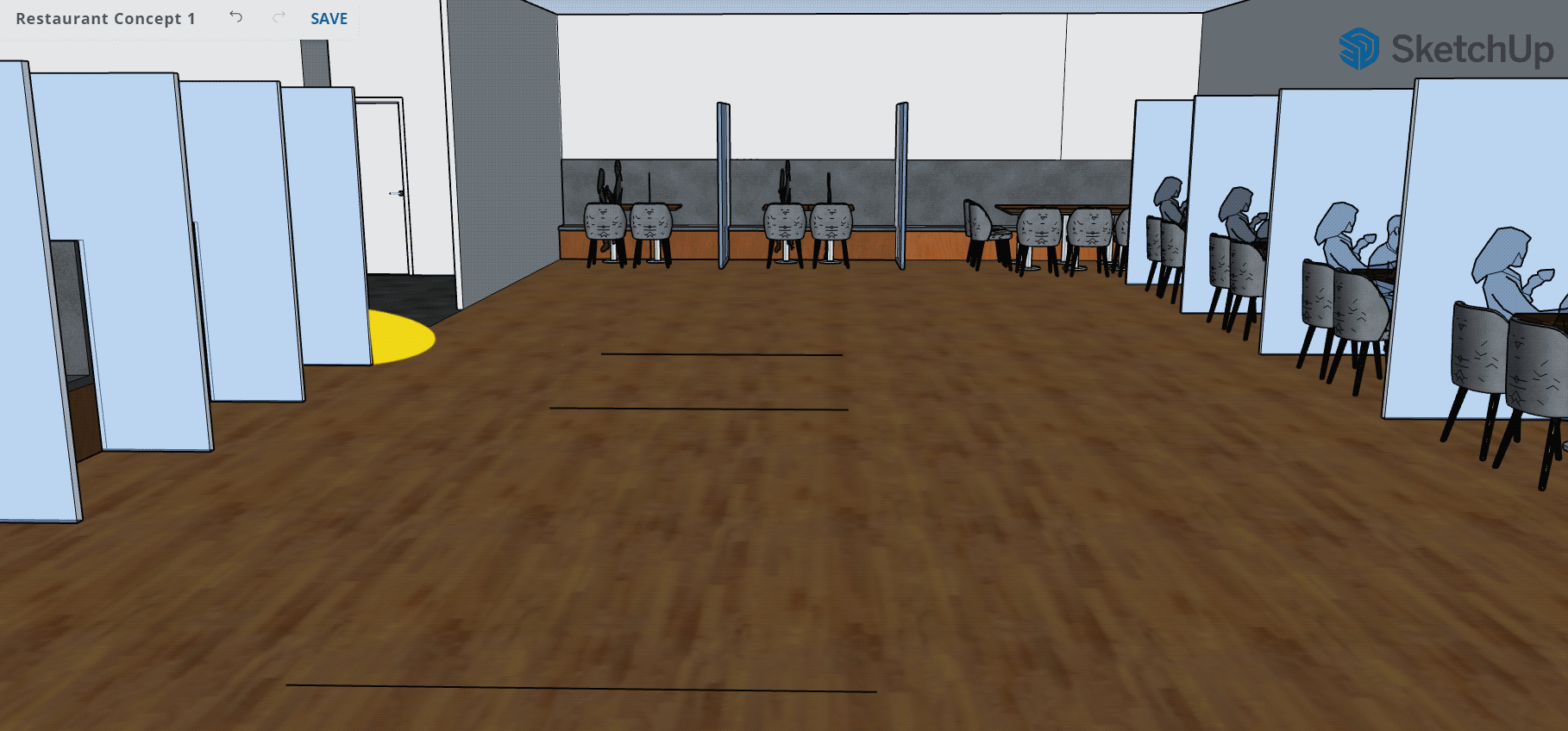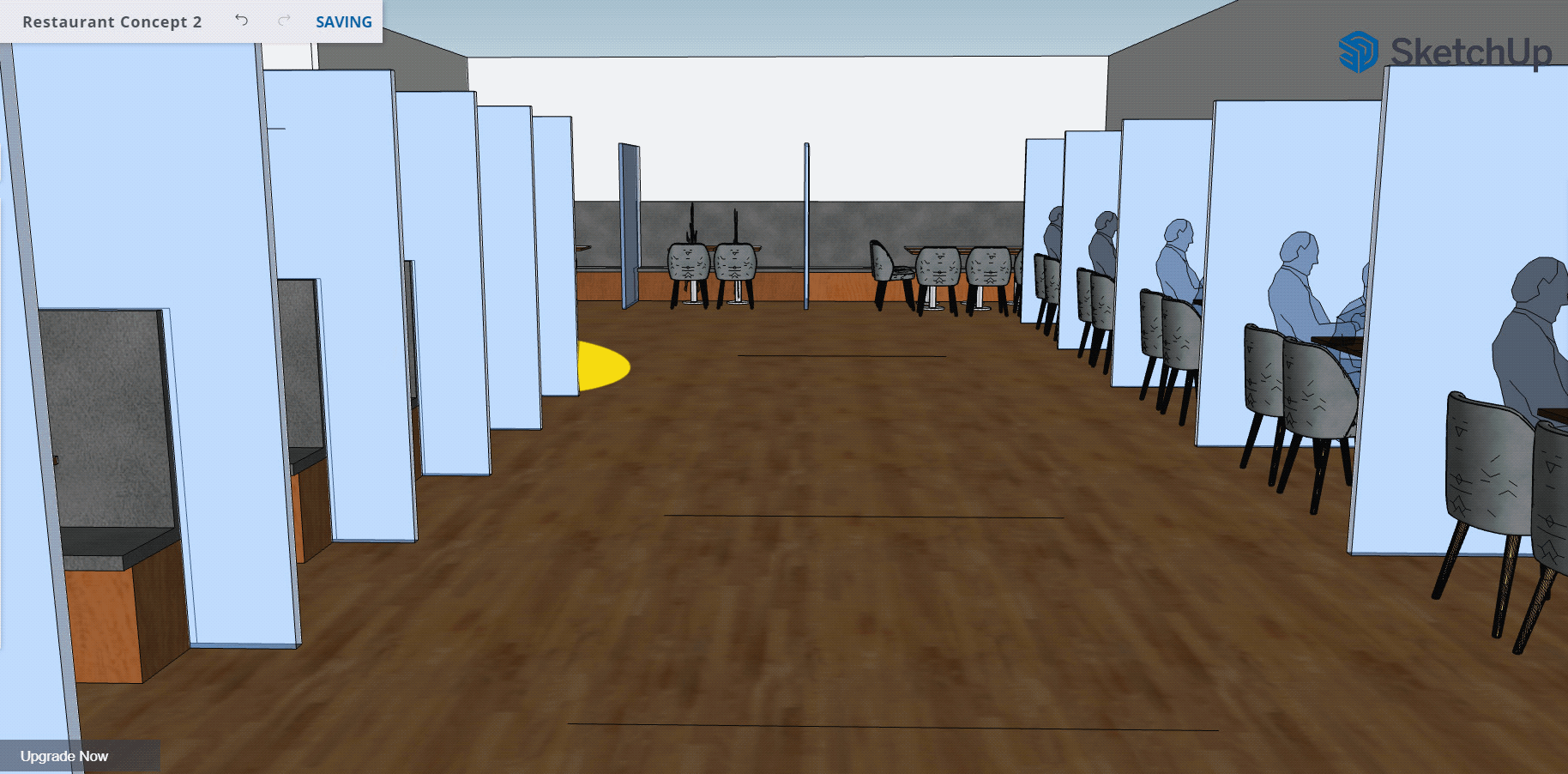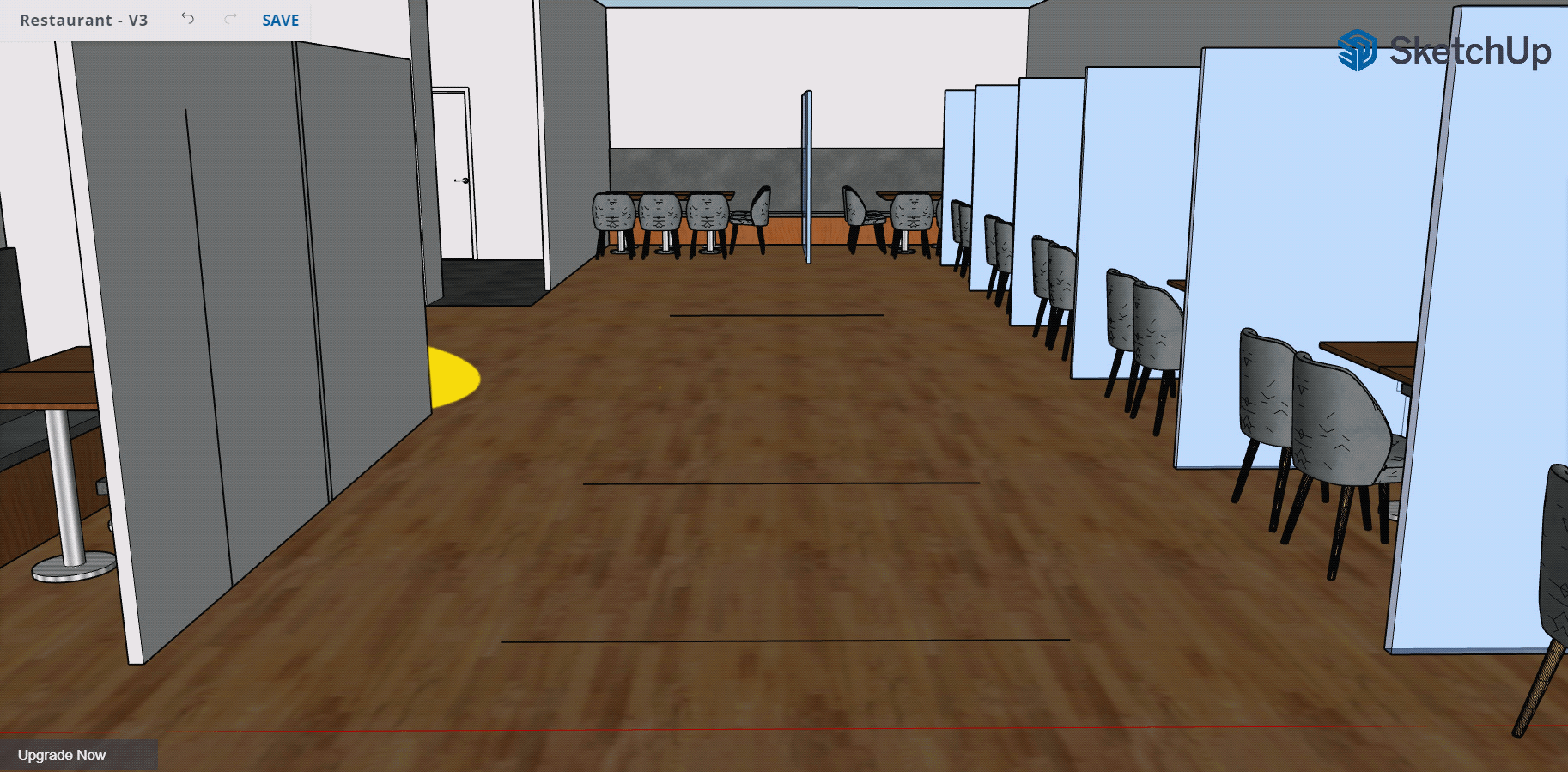
RESTOSSURED
POLICY KIT
THESIS PROJECT
Welcome to my 4th Year Capstone Project! This project was completed over the course of 8 months. To see more details about each phase of my project as well as my team mates' work, please check out our team website here - https://visitbid.wixsite.com/sid-visit
Contents

Introduction
The goal of this project was to design a solution for restaurants adversely affected by the COVID-19 pandemic. I developed Restossured to empower restaurateurs to increase customer confidence lost in the pandemic and to help them better understand government guidelines regarding COVID-19.
The Problem
COVID-19 continues to have a devastating impact on the restaurant industry. Government-imposed restrictions have been essential to curb the spread of the virus, but have been detrimental to the foodservice industry.
As of 2021 Q1, 41% of independent restaurants stated they would be forced to close permanently before June 2021 if conditions don’t improve.
(Restaurants Canada, 2021)
If things continue to improve, 2023 is forecasted to be the first year that foodservice sales will be higher than 2019 levels.
(Restaurants Canada, 2021)
Customer confidence is a key issue perpetuating loss of income for restaurants. Customers are scared for their own safety and are hesitant to return to dining out. Restaurants cannot survive on takeout alone, so must regain customers’ trust in order to be successful and profitable once more.

Project Drivers

Restossured


Restossured is a Policy Toolkit consisting of a website and a Communication Toolkit. The goal of the service is to empower restauranteurs increase customer confidence during and post-COVID-19.

Process Work
Secondary Research
To better understand the problem facing restaurants and to develop empathy, primary and secondary research was completed throughout the course of the project. This initial research made clear the extent to which the effects of COVID-19 affected and continue to affect restaurants.
Information gathered was organized into categories using a card sorting exercise in Miro. The results of this card sorting exercise can be seen in more detail here: https://miro.com/app/board/o9J_kho7-qc=/

Industry Expert Consultations
Surveys
6 industry experts were consulted to learn from their expertise in different fields relating to restaurants. Each described different struggles facing restaurants from their own perspectives and highlighted the positive things to come from the pandemic as well. The experts included:
-
A food blogger/ restaurant worker
-
Two restaurant designers
-
Two creative lighting experts
-
An expert in modern restaurant POS technology
130 customers' thoughts and opinions about dining during the COVID-19 pandemic were collected through the use of two surveys. Several factors stood out as things that customers felt could increase their confidence including:
-
Better communication and transparency about what is being done to keep people safe
-
More space between people
-
Better ventilation
Scenario Exercise

With a solid understanding of the issues facing restaurants and newly developed empathy, 10 scenarios were explored, looking at pain points in the experience of customers dining during the pandemic in different restaurant environments.
These scenarios can be seen in more detail here: https://miro.com/app/board/o9J_lGbinO8=/
Design Development

Early ideas focused on one element of the customer dine-in experience, but it was determined that solely focusing on one piece of the challenge was not enough. The crus of the problem had to be remembered - the issue of customer confidence. There restaurant space was found to be the main source of customer confidence issues.
At this stage, zoning was determined to be a major problem requiring a design solution. 3 ideas were explored to designate “zones” in a restaurant to promote proper distancing and flow throughout the space. Floor plans were used to study the flow throughout different restaurant spaces. These studies became essential components of the final design.
User Testing
5 participants were individually asked to look at 3 different restaurant designs through the use of 3D interactive floor plans. Participants were each given a “tour” of the space using a SketchUp model, then had an informal interview. Following the interview, participants were asked to complete a survey. This user testing aimed to explore 5 key elements that affect customers’ decision to eat out - safety (perceived and real), confidence and comfort, atmosphere, emotions, and expectations. The goals of this participatory design exercise were as follows:
-
To understand how to encourage customers to eat out at restaurants during the pandemic
-
To learn which aspects of a restaurant environment make people feel safe or unsafe
-
To understand the importance of ambience compared to safety
-
To understand customers’ thoughts, feelings, and emotions as they move through the restaurant space

These animations were shown to participants during user testing. They show how people walking through a restaurant may dodge around each other engaging in the "awkward dance" to avoid breaking physical distancing. Each animation shows a different restaurant layout with more or less space. The animations were used to gage customer comfort, having them imagine themselves in these environments.




User Testing - Key Findings
5 participants were individually asked to look at 3 different restaurant designs through the use of 3D interactive floor plans. Participants were each given a “tour” of the space using a SketchUp model, then had an informal interview. Following the interview, participants were asked to complete a survey. This user testing aimed to explore 5 key elements that affect customers’ decision to eat out - safety (perceived and real), confidence and comfort, atmosphere, emotions, and expectations. The goals of this participatory design exercise were as follows:
-
To understand how to encourage customers to eat out at restaurants during the pandemic
-
To learn which aspects of a restaurant environment make people feel safe or unsafe
-
To understand the importance of ambience compared to safety
-
To understand customers’ thoughts, feelings, and emotions as they move through the restaurant space




Concept Refinement
I decided to approach this problem by designing a Policy Kit Playbook to help restauranteurs understand and interpret government policy and redesign their spaces to increase customer confidence. Posters, window stickers, and social media post templates will help restauranteurs communicate these changes to customers with a goal of increasing their confidence and trust in the restaurant to return to dining out. I experimented with many floorplan designs to figure the best restaurant configurations for dining during COVID-19. These explorations informed ideas presented in the policy toolkit.
Service Blueprint
A service blueprint was created to visualize where elements of the Policy Kit could be implemented along a customers’ journey through a restaurant experience and how the additions would tie in to the existing service model.
Click the image below to open a PDF version.
Final Design
Restossured is a Policy Toolkit designed to help restaurateurs understand and apply government policy regarding COVID-19. It is a one-stop-shop, offering ideas to improve safety and customer confidence in each area of a restaurant as well as a toolkit to communicate those changes to customers. The goal of Restossured is to help restaurateurs encourage customers to return to dining out by improving customers’ confidence, and feed the struggling restaurant industry.
This service consists of a website and a communication toolkit that work together to reduce restaurateurs’ stress, improve safety and customer confidence, and encourage a return of customers.

Website
The Restossured website is designed to be a one-stop-shop for restaurateurs to reduce their stress and cognitive load by giving them everything they need to redesign, re-open, and keep up with information all in one place. The website contains ideas to improve safety and customer confidence in each area of a restaurant and also houses links to outside resources like government websites and 3rd party information about navigating COVID-19. The communication toolkit is also accessible through the website. The goal of the website is to help restaurateurs interpret government policies for redesigning their restaurants and offer suggestions to make their environments safer.

In designing this website, it was important to remember the mental state of the users as they deal with the emotional strain of the effects of COVID-19. The information had to be clear, accessible, easy to navigate, and concise. These factors were taken into account through the use of an active voice in the copy, airy and relaxing page layouts, and easy to understand navigation features.




Communication Toolkit
Once a restaurateur has made positive changes to their restaurant to improve safety and customer confidence following the ideas on the website, restaurateurs can apply to be Restossured Certified and gain access to the communication toolkit. Restaurants are required to pass a certification to gain access to the communication toolkit.

The Communication Toolkit has 2 parts - a printable package containing elements for display in and around the restaurant and a digital package for advertising on social media and online. It is designed to be used across multiple platforms to reach as many people as possible.
The posters and window stickers are meant to be seen by as many passers-by and potential customers as possible. The social media posts work the same way, but online, encouraging restaurateurs to advertise on digital platforms as well, to reach an even larger audience.

Communication Toolkit in Context


Brand Language
Branding carries a lot of importance because customers will learn to associate the Restossured brand with a safe restaurant they feel comfortable visiting. It is important that the branding is recognizable and speaks a language users can relate to.
The design language is clean, fresh, friendly, and fun while also having a relaxed and trustworthy feel. Bright, happy colours were chosen and paired with a calming, friendly logo to represent the brand. The branding had to strike a balance between fun and welcoming and trustworthy and reliable.
The name “Restossured” is a combination of the words “restaurant” and “reassured” to highlight the purpose of the service: to reassure restaurant managers, staff, and customers.
The graphic style is very simple, bright, and friendly, to clearly communicate and complement the written sections of the site. The colourful graphics break up the otherwise lengthy black and white text chunks, offering some visual respite.

Restaurateur & Customer's Journey
Restaurateurs and customers, the targeted users, use and experience this service in different ways.
The restaurateur sets up the system for the customers’ experience. The restaurateur’s actions directly affect the customer’s experience and journey. The two journeys intersect when the customer arrives at the restaurant and experiences the measures the restaurateur put into place.

Restossured Video
Measures of Success
If this project is made into a reality, we can look to a couple metrics to gauge its success. Things like reviews and comments from customers, and number of repeat customers will be good indicators to see how customers react to the impact of the service being implemented in restaurants. On the restaurant staff and management side, success will be shown through reports of happier staff and more restaurants using the service and applying to be certified.
